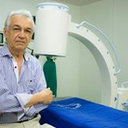The biopolymer sugarcane as filling material of critical defects in rats.
Schlüsselwörter
Abstrakt
OBJECTIVE
To evaluate the effects of particulate (granule-shaped) SCB on bone repair relating it to its biocompatibility and bone neoformation.
METHODS
Thirty Wistar rats were submitted to a one 7-mm-diameter defect and divided equally into three experimental groups, with two different postoperative times of evaluation, 90 and 120 days. Each calvaria defect was filled up with clot (control group), particulated autogenous bone or granulated SCB. Five animals of each group were assessed at 90 and 120 days after surgery. In these two periods, histological and histometric analysis were obtained.
RESULTS
The clot group showed a bone resorption trend while the autogenous bone group a bone repair trend. However in the SCB group, the critical defect filled up only with fibrous connective tissue and presented none bone neoformation.
CONCLUSIONS
The sugarcane biopolymer when used in critical size defects was a biocompatible material and proved to be a good material to fill bone cavities, keeping them as uniform areas filled with soft tissue and avoiding the tissue shrinkage.


